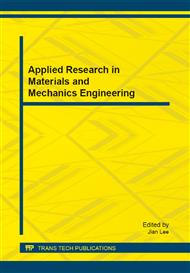p.162
p.167
p.181
p.187
p.195
p.202
p.208
p.214
p.221
Sheet Metals Forming Die Design Using Finite Element Analysis and the Taguchi Method
Abstract:
Sheet metal deep-draw die is primarily constructed with draw bead, which is then modified based on trial and error to obtain a successful forming without splitting. This work aims at a robust design of forming die using numerical analysis and the Taguchi method. A three dimensional elastoplastic finite element model of a sheet metal forming process of SPCEN steel has been successfully developed using the material flow stress obtained from the modified Erichsen cup test. The model was validated with the actual forming experiment and the results agreed well. The influence of draw bead parameters on splitting and thinning distributions were examined using the Taguchi method. Four parameters, namely the friction coefficient, draw bead height, radius and shoulder radius were investigated. The Taguchi main effect analysis and ANOVA results show that the height and shoulder radius of the draw bead are the most important factor influencing the thinning distribution. Applying the Taguchi method and using the minimum thinning percentage as the design criteria, the optimum die design was identified as height, radius, shoulder radius and the friction coefficient of 4, 8, 8 mm and 0.125 respectively. The verified finite element model using the optimum die design was conducted. The predicted Taguchi response was within 5.9% from finite element analysis prediction. The improvement in the reduction of thinning percentage was 22.35%.
Info:
Periodical:
Pages:
195-201
Citation:
Online since:
August 2014
Authors:
Keywords:
Price:
Сopyright:
© 2014 Trans Tech Publications Ltd. All Rights Reserved
Share:
Citation:


